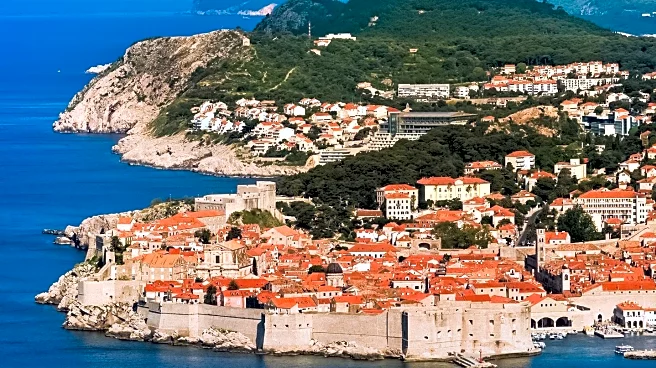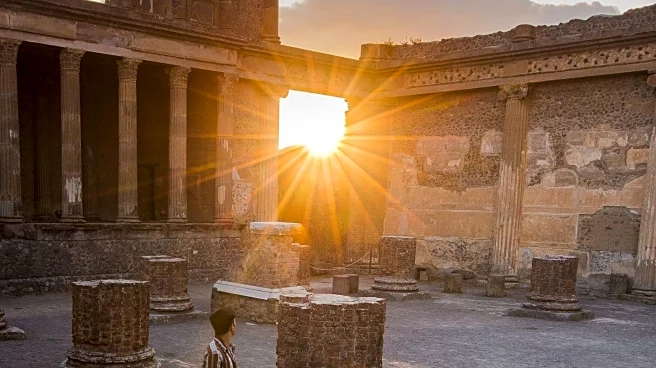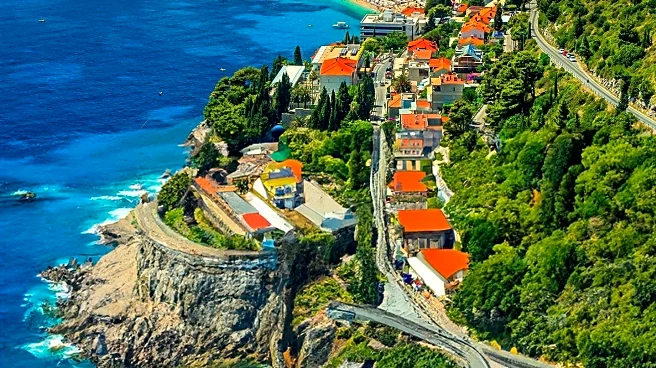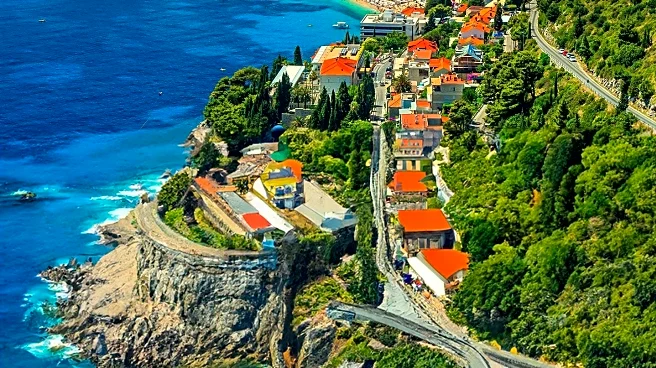What's Happening?
The Michelin Guide has released an article detailing the timeless allure of Croatia's Dalmatian Coast, focusing on the cities of Split, Zadar, and Šibenik. Known for its stunning landscapes and rich cultural
heritage, the region offers a blend of ancient walled cities, rugged coastlines, and vibrant culinary traditions. The guide highlights notable attractions such as Zadar's Sea Organ and Greeting to the Sun installations, Šibenik's St. James Cathedral, and Split's Diocletian's Palace. Additionally, the article explores the region's gastronomic offerings, including local seafood, traditional dishes, and renowned restaurants like Pelegrini and Krug.
Why It's Important?
The Dalmatian Coast is a significant cultural and tourist destination, attracting visitors with its historical sites and culinary excellence. The Michelin Guide's focus on the region underscores its importance in the global tourism landscape, promoting Croatia's cultural and gastronomic heritage. By highlighting the unique attractions and culinary experiences, the guide encourages tourism and supports local economies. The recognition of the Dalmatian Coast's offerings contributes to Croatia's reputation as a premier travel destination, fostering international interest and cultural exchange.
What's Next?
As the Michelin Guide continues to spotlight Croatia's Dalmatian Coast, the region is likely to experience increased tourism and investment in hospitality and cultural sectors. The ongoing promotion of its culinary and cultural attractions will attract more visitors, enhancing the local economy and encouraging further development of tourism infrastructure. The recognition by Michelin may also inspire other regions to showcase their unique offerings, contributing to a broader appreciation of Croatia's diverse cultural landscape.
Beyond the Headlines
The focus on the Dalmatian Coast also highlights the importance of preserving cultural heritage and promoting sustainable tourism. As the region attracts more visitors, efforts to maintain its historical sites and natural beauty will be crucial. The integration of modern installations like the Sea Organ and Greeting to the Sun reflects a balance between tradition and innovation, offering insights into how cultural heritage can be preserved while embracing contemporary influences.











